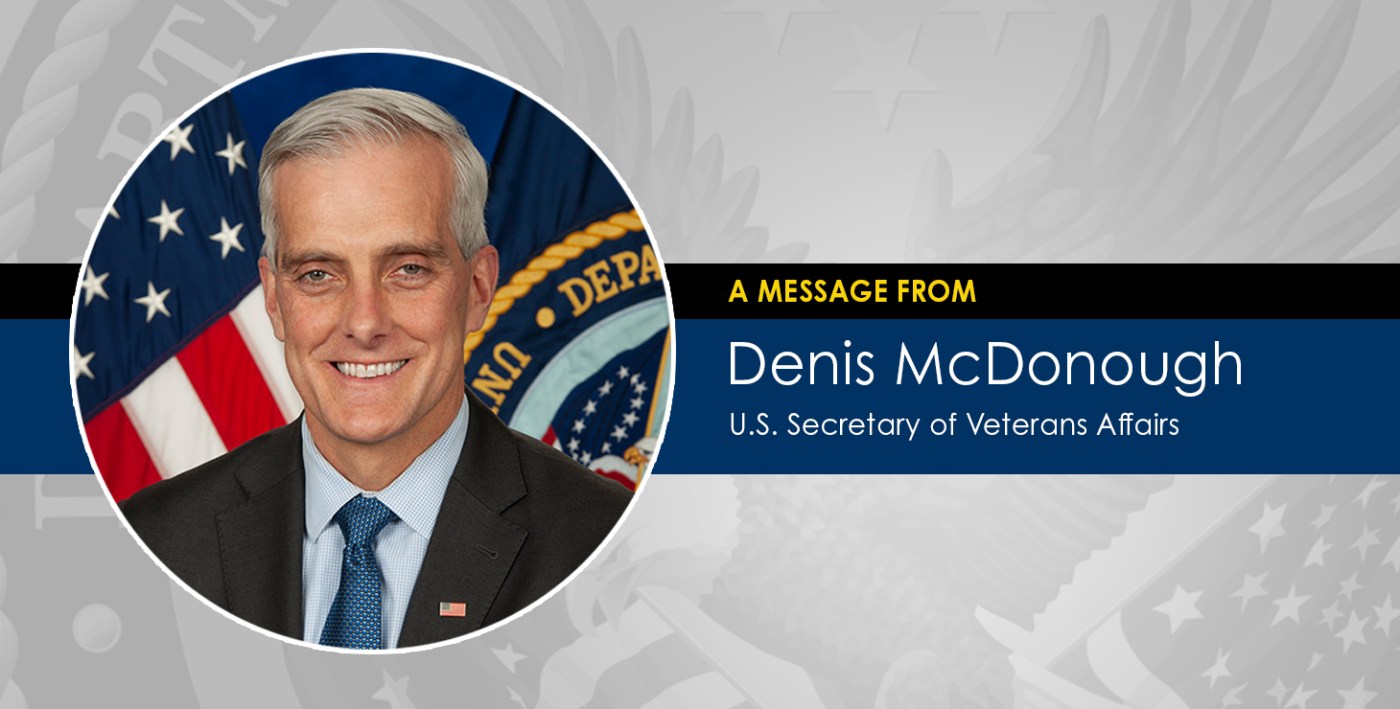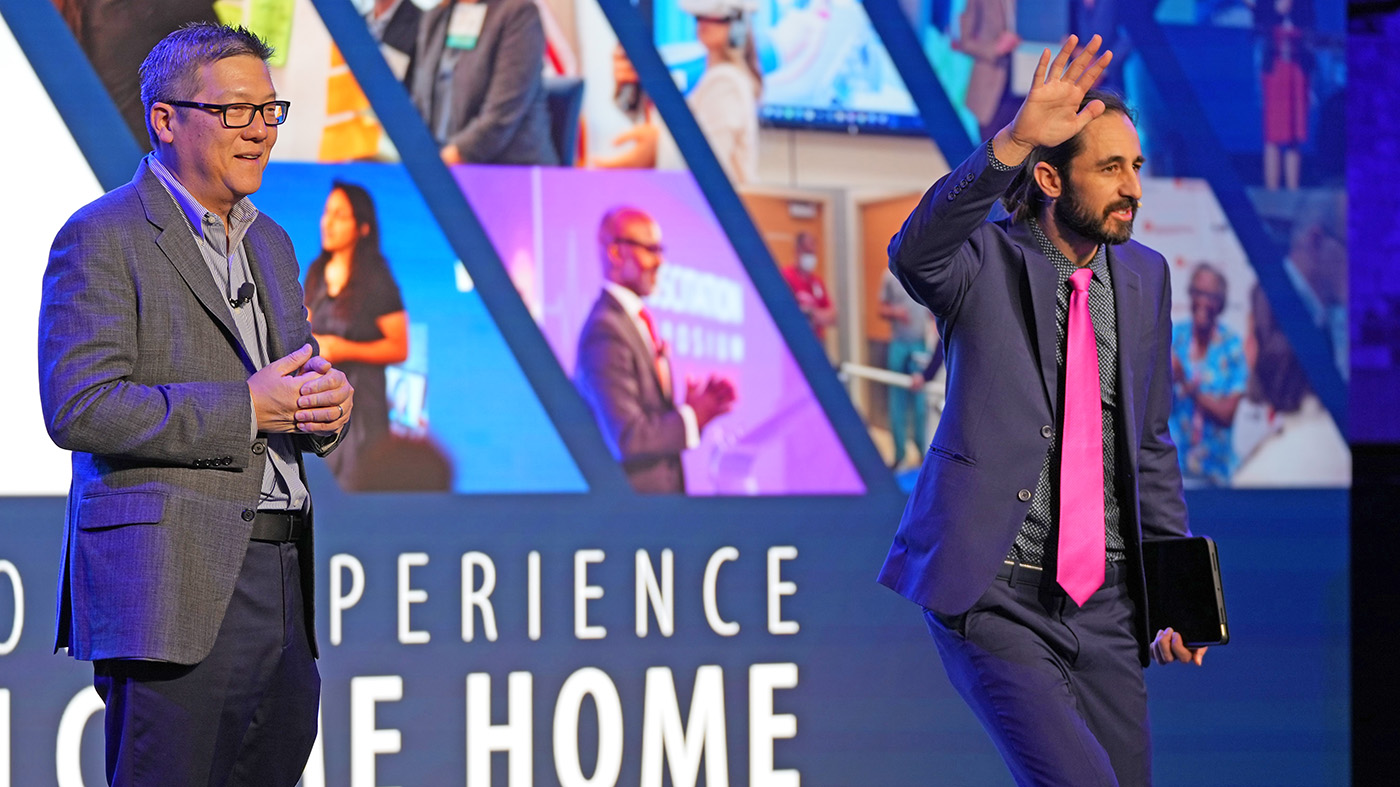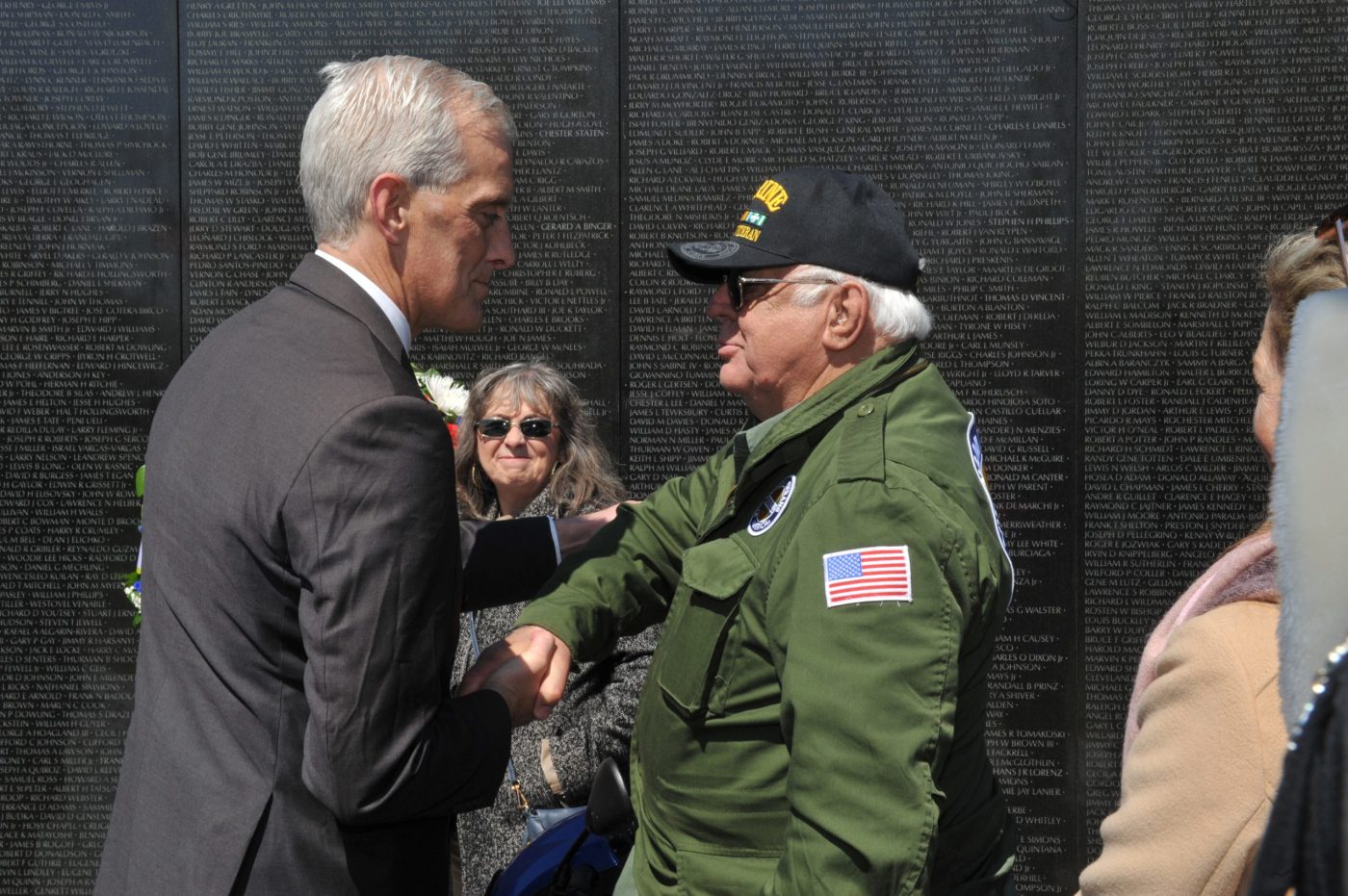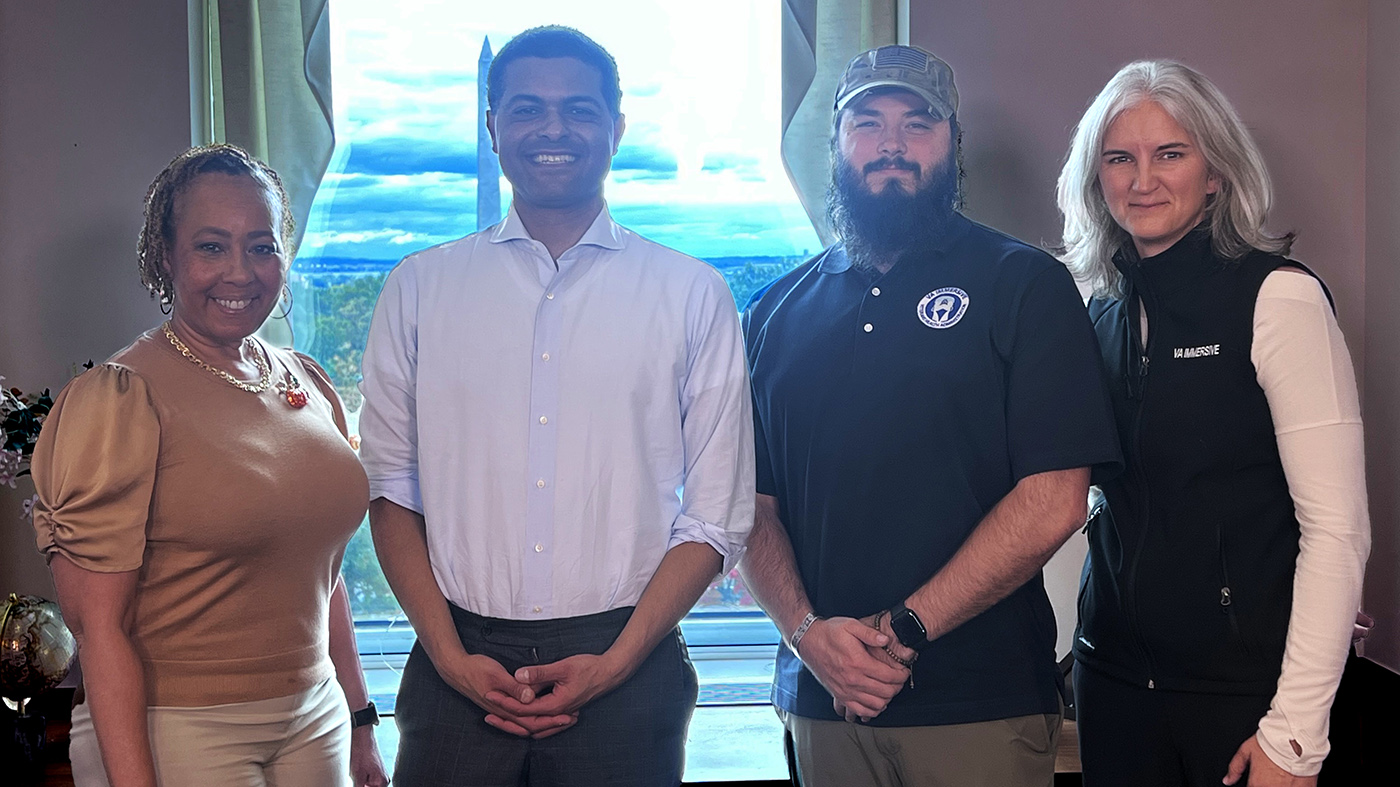From the cardiac pacemaker to the liver transplant to the nicotine patch, VA has a long, well-recognized history of innovation. That innovative spirit lies at the very heart of VA, and it’s driven by our unceasing focus on delivering the most access and best outcomes for the Veterans we serve.
Recently, VA’s spirit of innovation was again on display when Veteran Health Administration’s (VHA) Innovation Ecosystem hosted its Fourth Annual Innovation Experience Conference. This year’s conference brought together a record number of VA employees, Veterans and partners from both the public and private sectors to showcase ways VHA innovation, collaboration and technology are “breaking boundaries” to forge the future of Veteran health care.
The conference reminded me that the innovation experience is the VA experience. It’s what we’re about. And I’ve seen it firsthand throughout the COVID-19 pandemic.
When COVID hit, without missing a beat, our team at VA began fighting to save lives with incredible courage and ingenuity. Here are just a few of the great, life-saving innovations they’ve come up with over the last 18 months:
- Created a life-saving asymptomatic COVID testing regimen at West LA
Very early in the pandemic when two VA nursing home residents tested positive for COVID in the Greater Los Angeles Health Care System, Dr. Steve Braverman and his team jumped on it. Dr. Braverman mandated COVID testing for all residents and staff, the very first example of widespread asymptomatic testing and segregation of nursing home residents in the VA system. When they found 14 asymptomatic COVID residents and 8 infected staff, they immediately established a COVID Recovery Unit to sequester the infected individuals who didn’t have to be admitted.
That quick action helped VA better understand the prevalence of asymptomatic transmission and headed-off a severe outbreak that would have otherwise gone undetected. One of those residents died from COVID, and it could have been far, far worse. Dr. Braverman’s asymptomatic testing practice became VA policy to help save lives across the nation.
- Fabricated Personal Protective Equipment (PPE)
In response to the pandemic and to support front-line workers in the COVID fight, the Innovation Ecosystem fielded its Agile Design and Production Transformation (ADAPT) Initiative. ADAPT teams from Puget Sound, Charleston and Richmond VAMCs collaborated with the Food and Drug Administration, the National Institutes of Health, and America Makes. Together, they designed, tested, fabricated and 3D-printed PPE and critical medical devices – including more than 12 million diagnostic COVID nasal swabs, 38 million face shield parts, and hundreds of thousands of other items like mask and ventilator parts – in just five months.
- Developed the Powered Air Purifying Respirator (PAPR) hood
Supported by the Innovation Ecosystem, Dr. Joseph Iaquinto and his team at the Puget Sound Health Care System developed a universal, reuse-capable Powered Air Purifying Respirator (PAPR) hood. His team collaborated with Dr. Jennifer DeLaney and Washington University in St. Louis to obtain regulatory approval for a complete PAPR respirator system. The PAPRs are full respiratory systems that protect for clinicians from COVID infection while they’re caring for their Veteran patients. The first 100 PAPR hoods were delivered locally to VA Puget Sound. Today, hundreds of those respirator systems are being delivered around the world to India, Africa and South America.
- Launched a nationwide COVID screening app
Dr. Kenneth Goldberg and his team at the Durham VAMC partnered with Patrick Bateman and Martha Wilkes in VA OI&T to take their web-based COVID-19 screening app nationwide. So far, it’s screened more than 17 million Veterans and visitors coming to our medical centers, helping keep the Veterans we serve, our employees and all of us safer.
- Invented the Clear Talker Mask
Occupational therapist Melissa Oliver and rehabilitation engineers John Miller, Brian Burkhardt and Seth Hills invented the Clear Talker Mask. The Clear Talker Mask is exactly what it sounds like: a see-through mask that allows hearing impaired and deaf folks to read lips, even while their companions are masked. This innovation may seem simple, but it’s been critical to providing effective health care, speech therapy and mental health care to Veterans and non-Veterans alike.
- Used virtual reality to escape the confines of COVID
Caitlin Rawlins at the Western North Carolina VA HCS in Asheville, NC, introduced virtual reality technology to Community Living Centers. Thanks to Rawlins, Veteran residents confined inside because of COVID could interact virtually with the outside world. They engaged in immersive experiences for relaxation and meditation – like walking through virtual woods, sitting by a fire, resting on the beach – experiences that are so important to well-being and minimizing loneliness, boredom and isolation. That same technology will be deployed in employee wellness rooms, where it may help employees fight COVID burnout during their breaks. And just last week, VA Asheville started using virtual reality with COVID in-patients.
- Connected with Veterans to Whole Health via Television
Kyle Robinson, a registered nurse at the St. Louis VAMC, partnered with Uniper technologies to bring VA into Veterans’ homes. Thanks to Robinson’s work, older Veterans with mobility issues and technology challenges can more simply use their televisions to connect to whole health resources like tai chi, yoga, mindfulness meditation, nutrition classes and more. The set-up included tele-health, so Veterans could easily have virtual face-to-face encounters with their providers. Additionally, VA providers could drop-in for a quick follow-up, just to make sure their Veteran was doing well.
Ultimately, this system keeps Veterans with mobility issues more safely connected to VA – whether that’s because of COVID limitations, aging or injury. It’s still early, but Veterans in the pilot report that they’re exercising more and feeling more connected to the outside world.
- Reimagined Veteran Health Care
Innovation Ecosystem Director of Design and Storytelling Brynn Cole and her team are going to help VA lead the nation in defining a post-pandemic, transformative “new normal” for the health care industry. Cole’s not just studying what has changed about health care during the pandemic – she’s imagining what might change. That work will help us better anticipate Veterans’ needs of tomorrow, and better prepare to meet those needs today.
- Built a Long COVID Community of Practice
Allison Gustavson at Minneapolis VAMC is working with Amanda Purnell and Marian Adly to lead VHA’s Long COVID Community of Practice. They’re collaborating across 16 VAMCs – and they’ll soon be adding 26 more VAMCs – so we can all better understand Long COVID, how it’s affecting Veterans and how to address it.
Topics in this story
More Stories
The 2023 Innovation Experience showcases the best of VA innovation and the impact of VA employees advancing Veteran care.
In a special town hall event on Wednesday, Nov. 8, VA Secretary Denis McDonough addressed the top requested concerns from Veterans and their families, caregivers and survivors.
Learn how VA Immersive is using virtual reality and augmented reality to transform care delivery for Veterans by getting heads in headsets.






